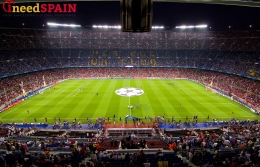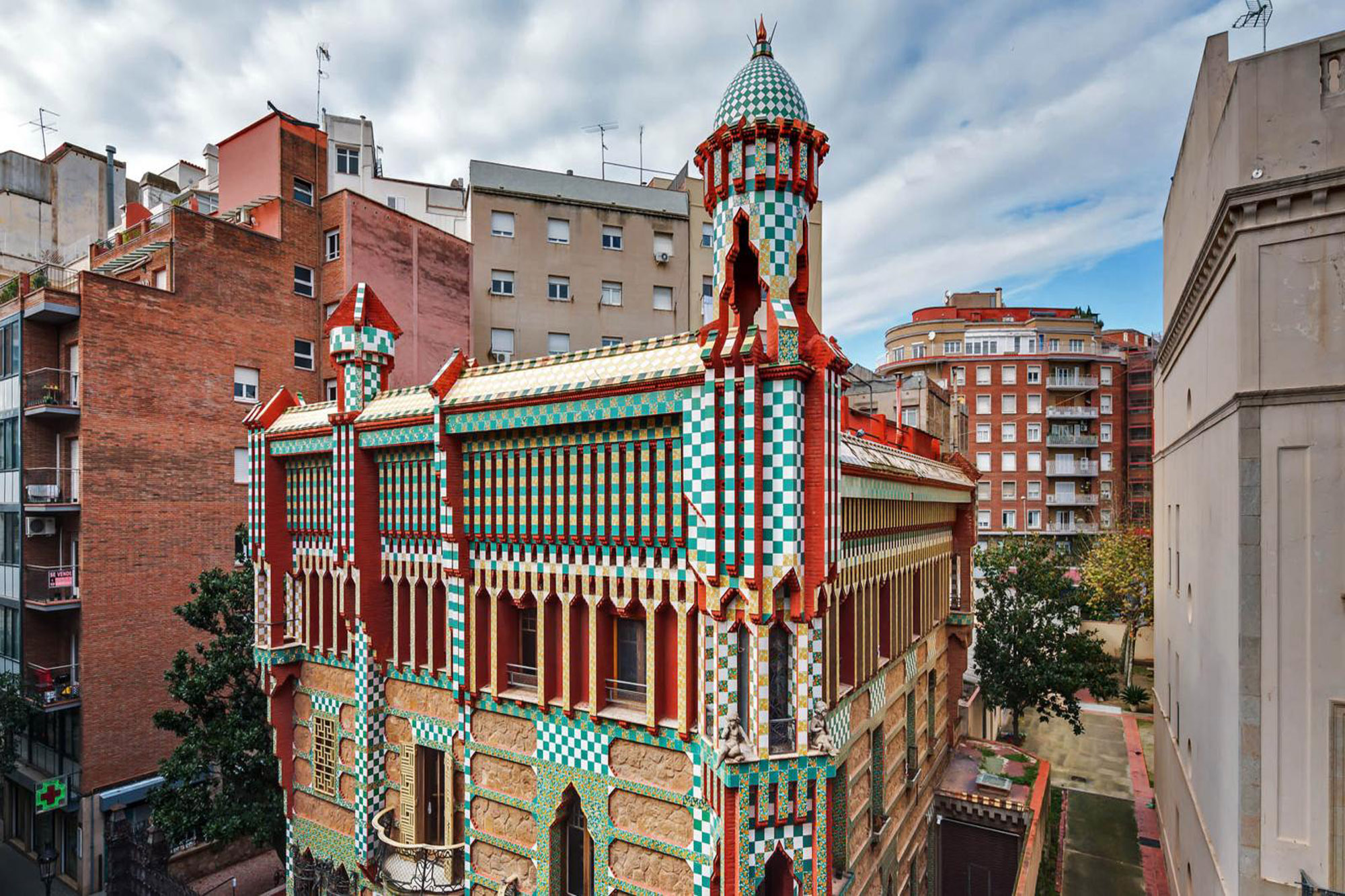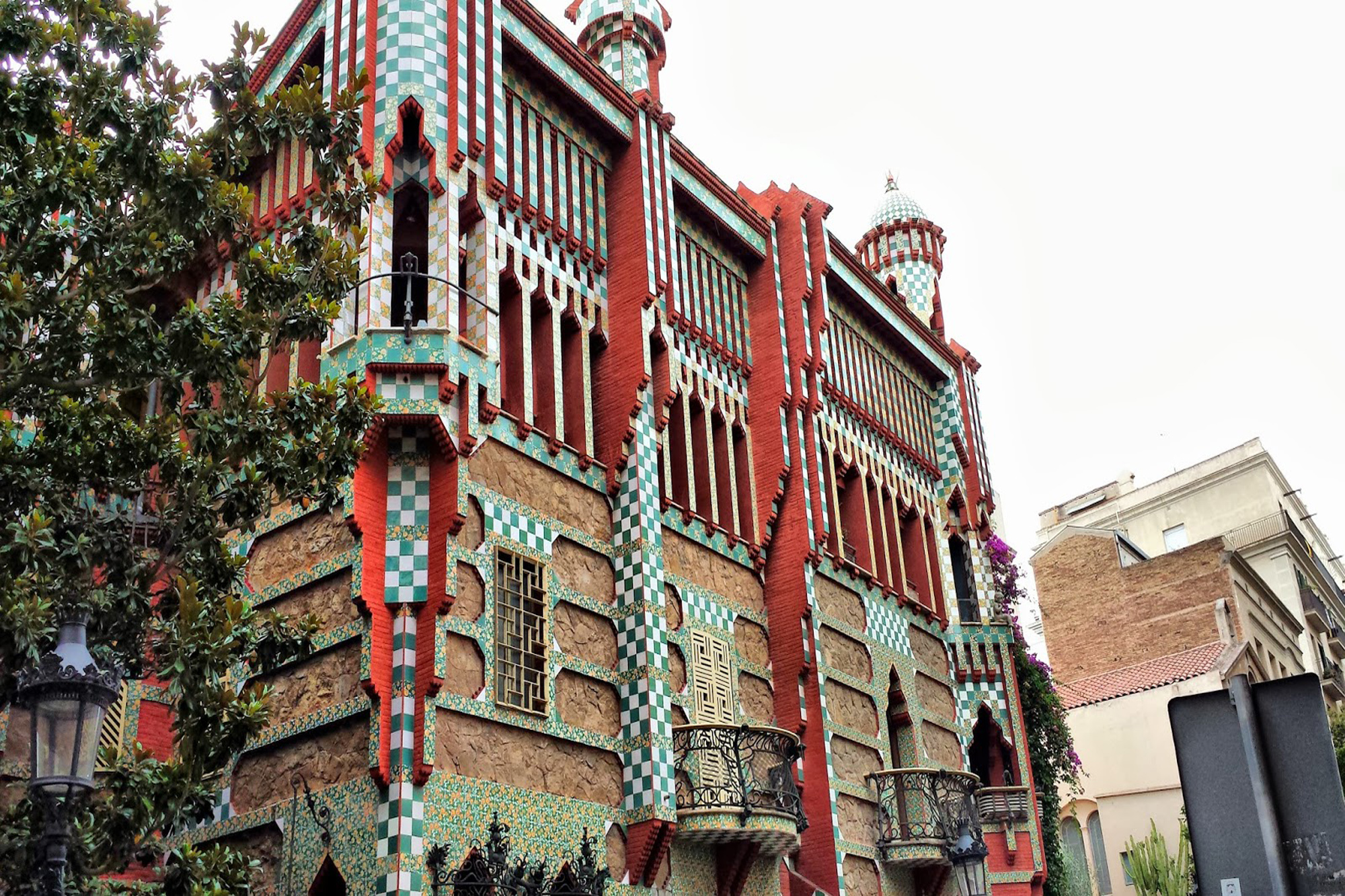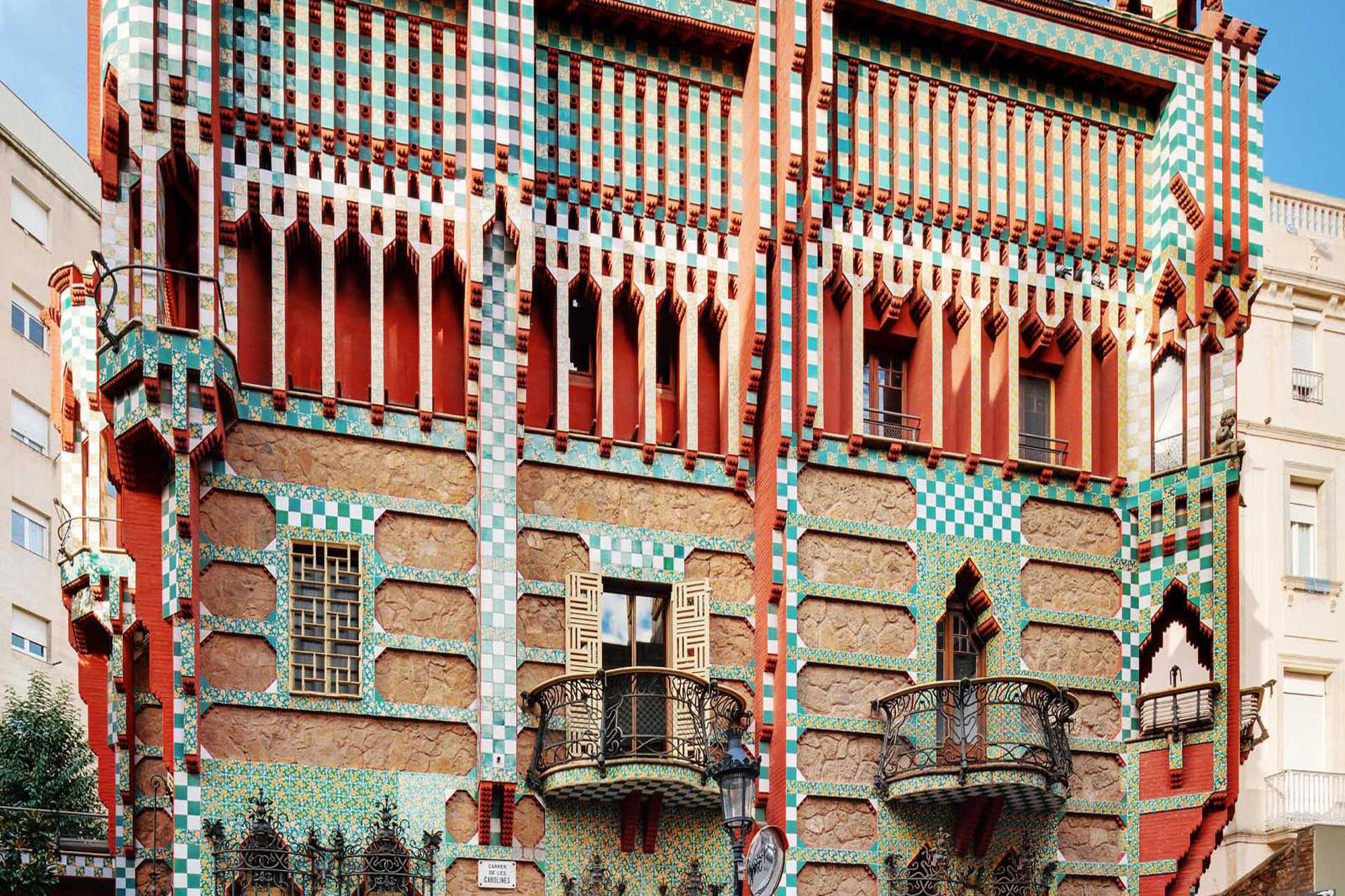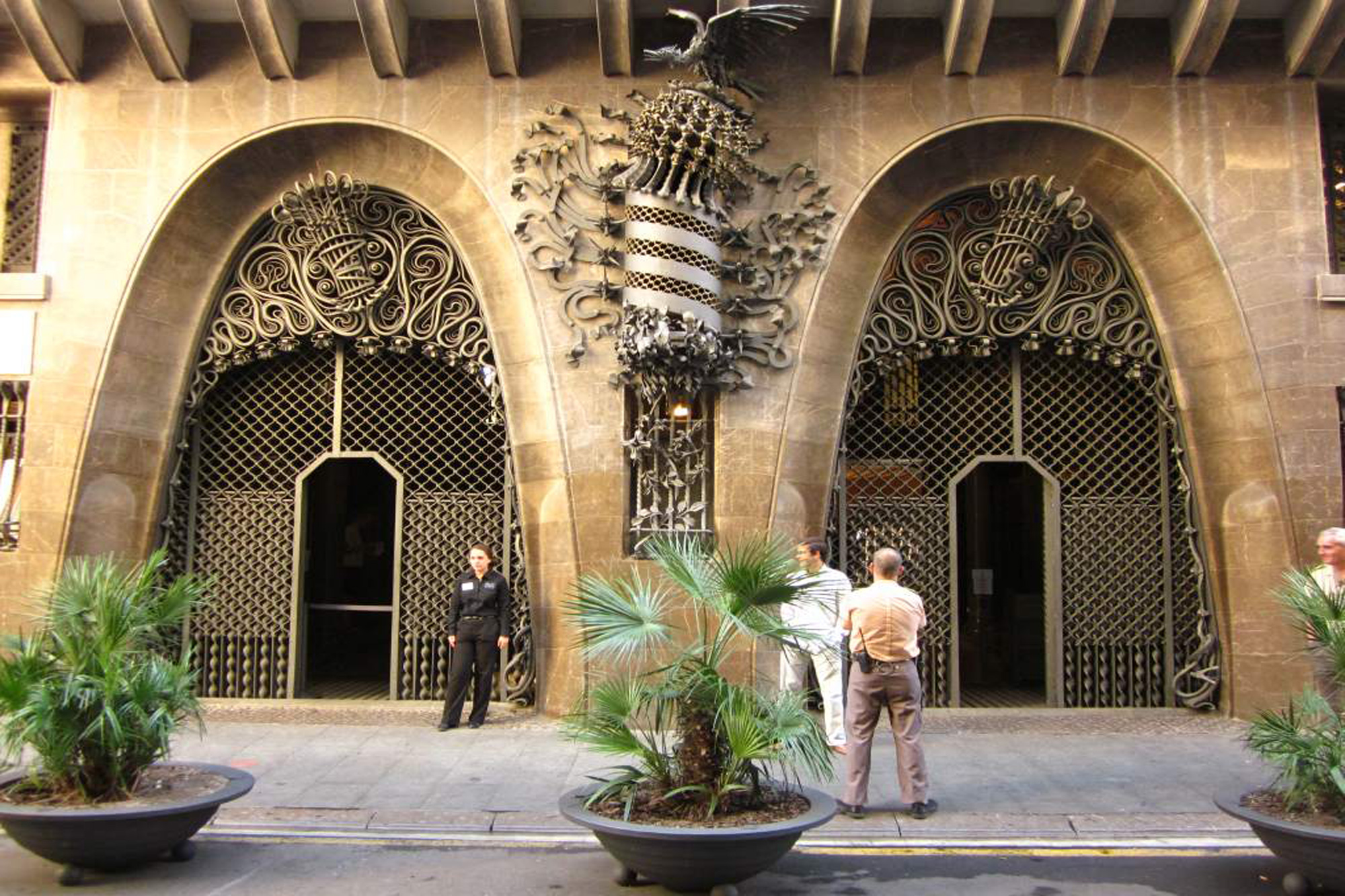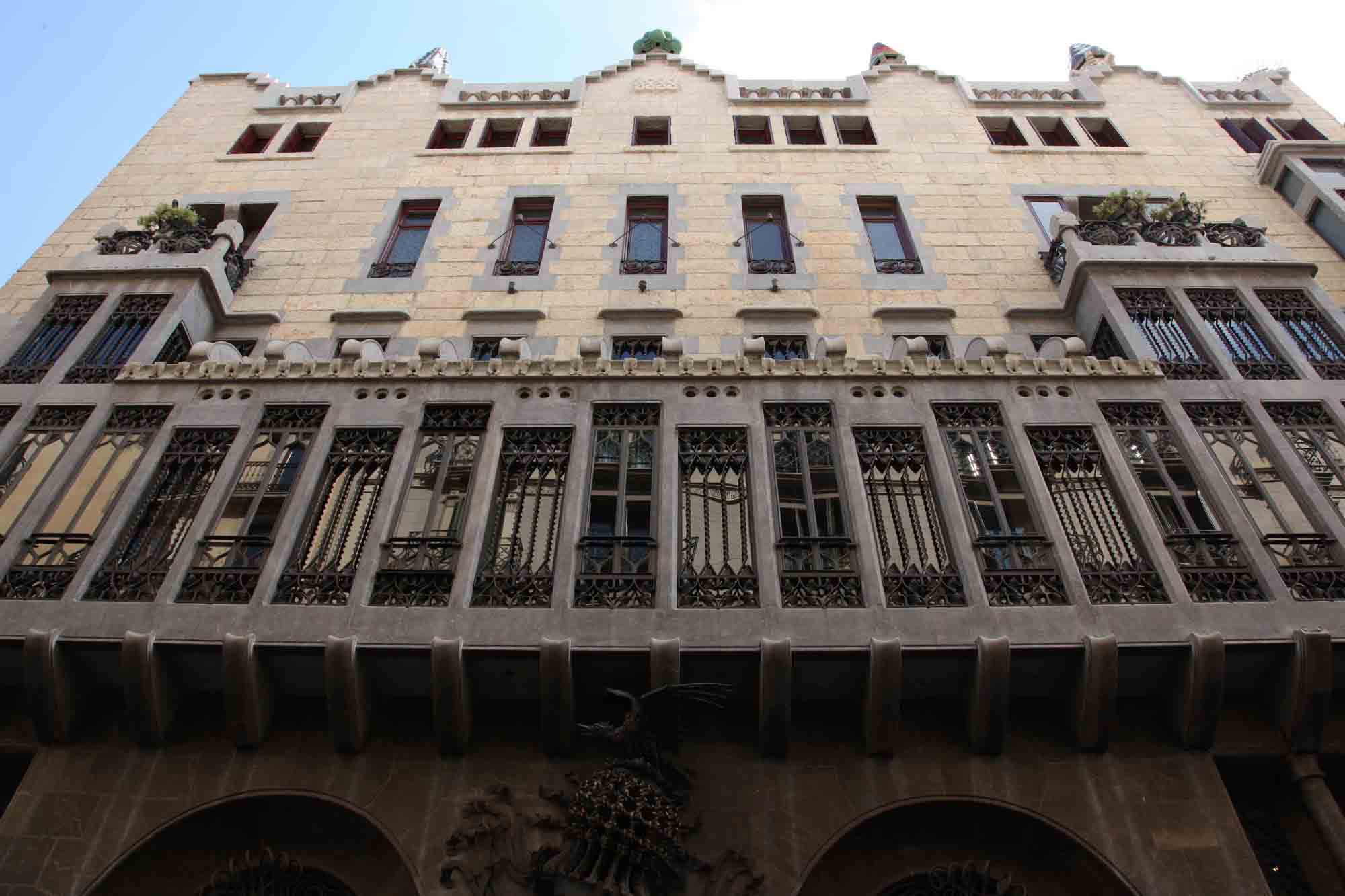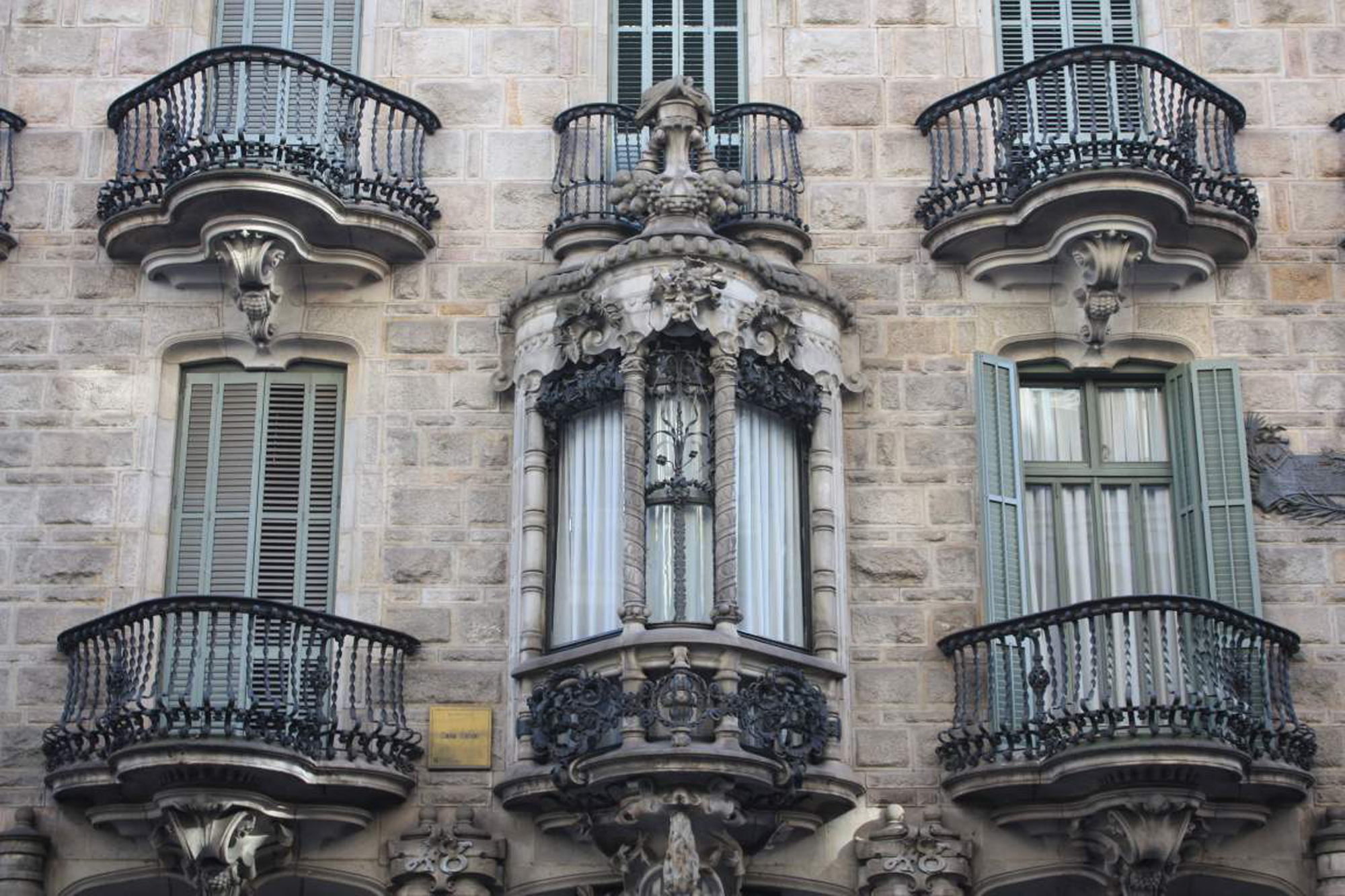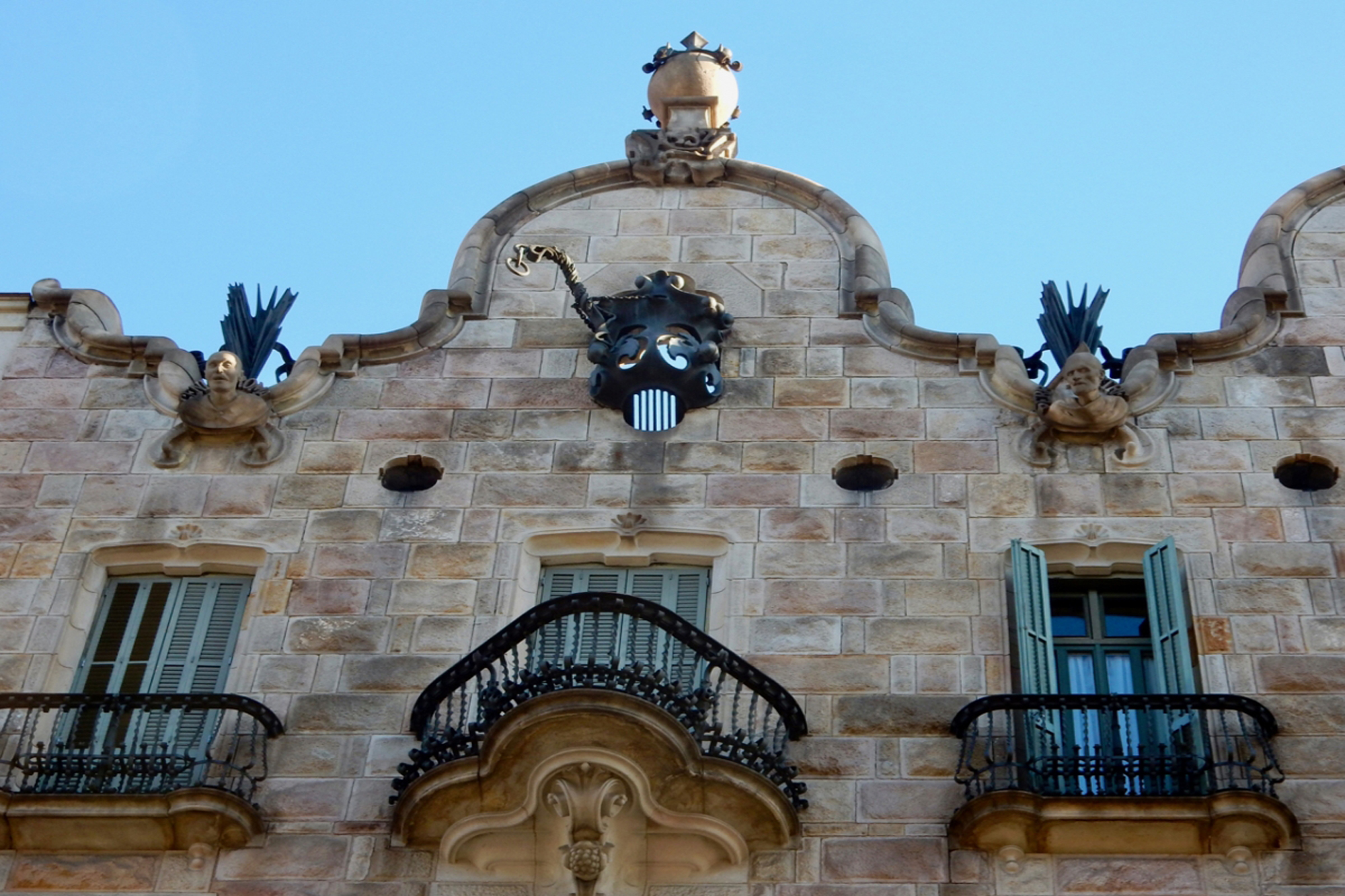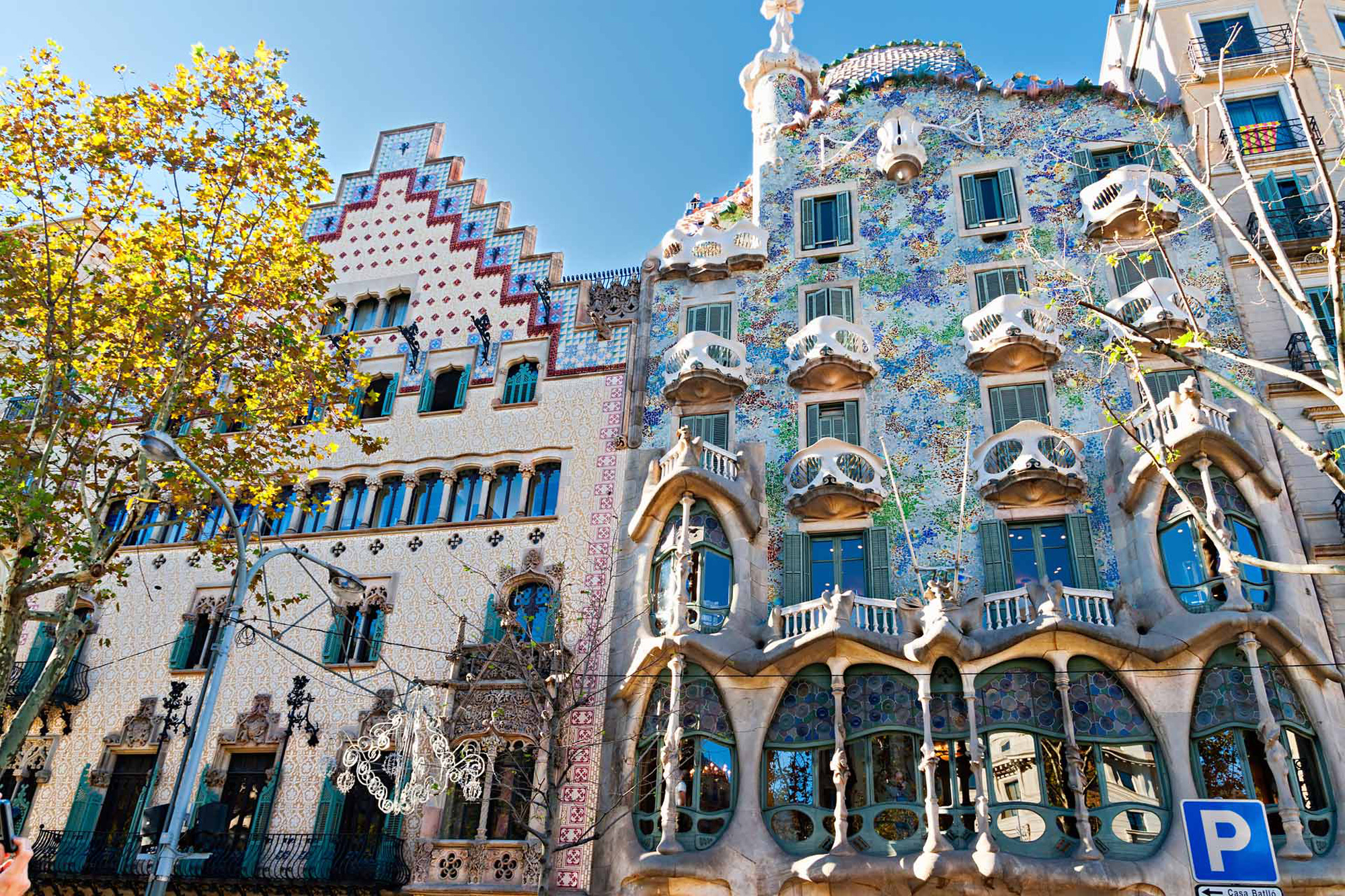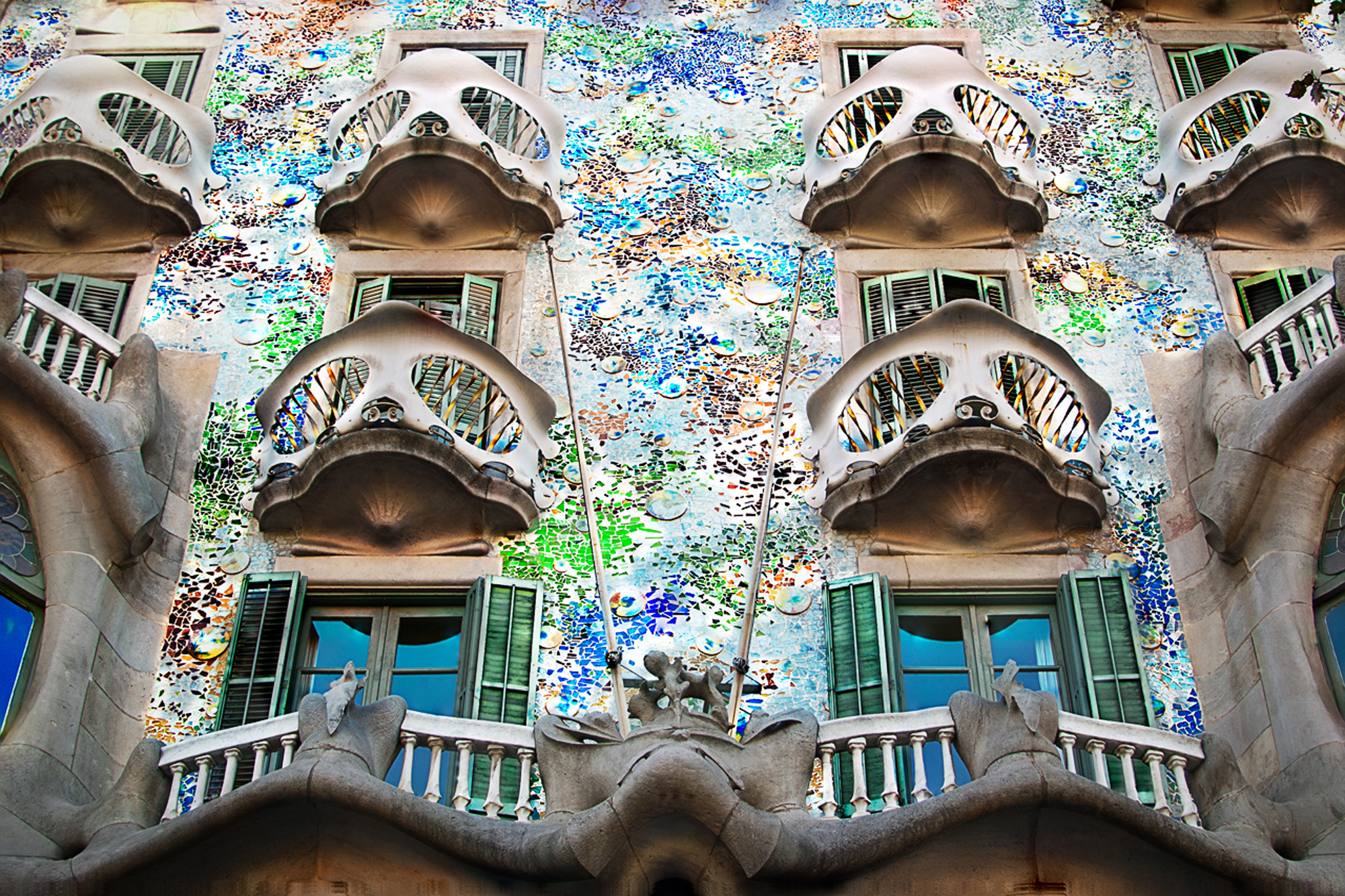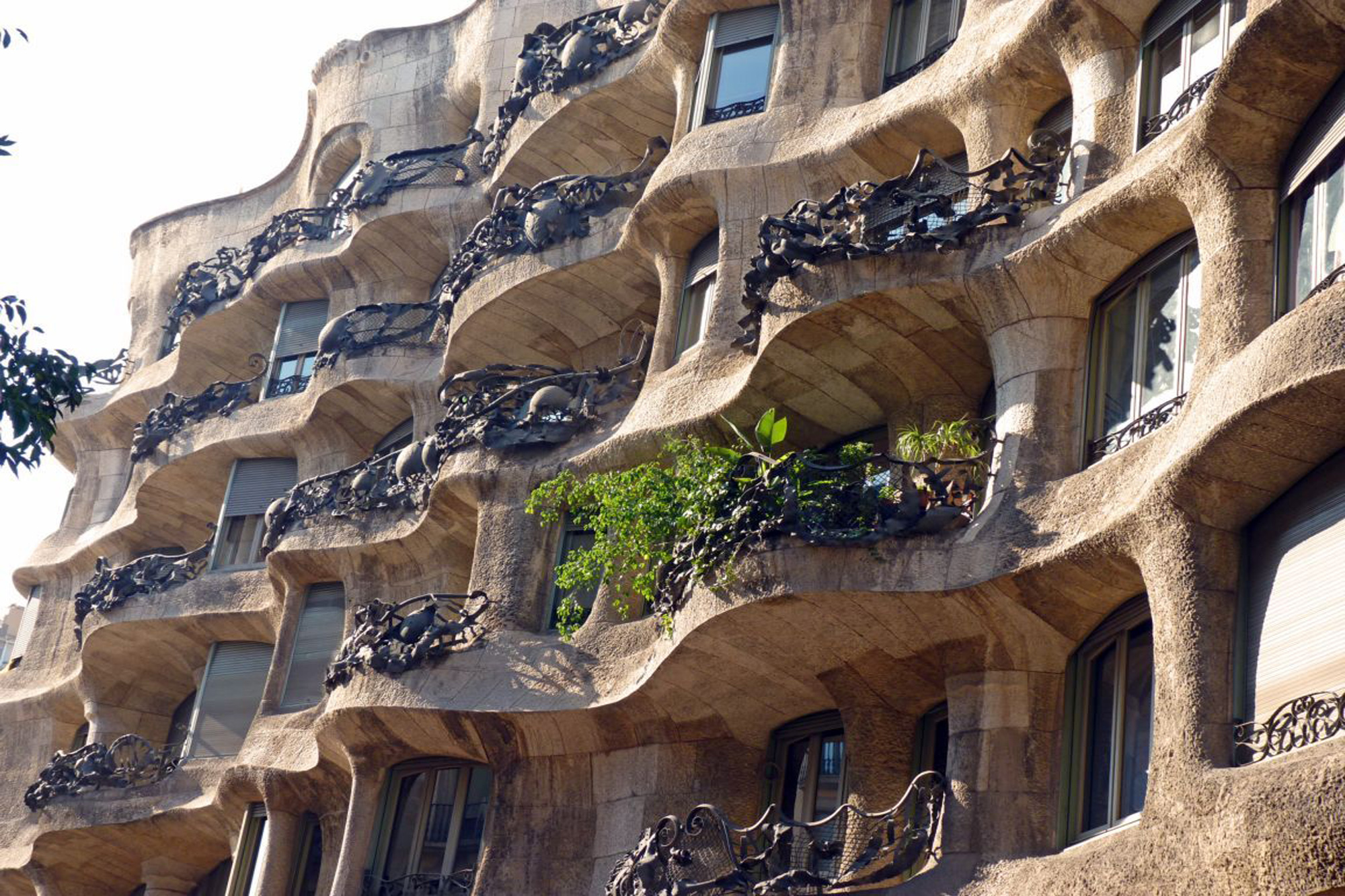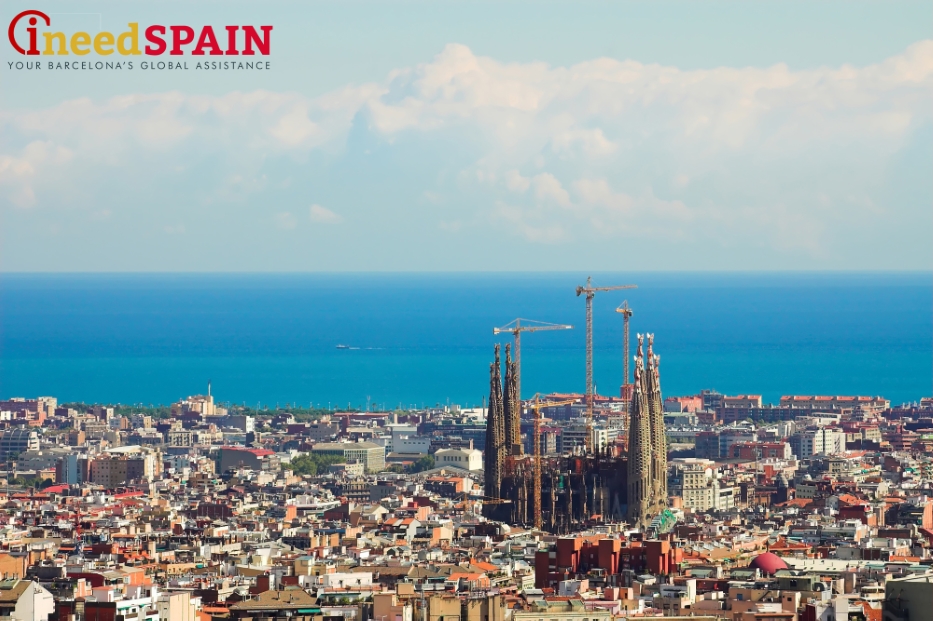
The first sites travelers will see highlighted in any tourist guide to Barcelona are Sagrada Familia and Parc Güell, creations of the renowned Gaudi. Gaudi, the most famous Spanish architect, built a number of houses for the city bourgeoisie and philanthropists, and the unique style of Gaudi’s works has been immortalized in art history as examples of true masterpieces. In general terms, Gaudi’s architecture can be described as gorgeous and eclectic, with elements of modernism. At different periods in their histories, all of these buildings have been included in the World UNESCO Heritage list.
Casa Vicens
This private residence was built from 1883 to 1885 for the family of Manuel Vicens, a brick and tile factory owner. A curious fact is that this building basically functioned as the graduation project of the renowned architect as well as his first commission. Gaudi designed the project as a student, and the preparations were finished in 1878, at the time of the young and still inexperienced architect’s graduation. The building, made of uncut stone, was decorated with staggered, colored tiles. This contrast of the surface materials became a trademark accent for Gaudi’s exteriors. The exterior of the house resembles the Spanish-Arabic “mudéjar” style, a synthesis of Gothic and Moorish traditions. The house even looks like a Moorish castle with elegant little towers and galleries. In short, every element of this structure previews the style that made Gaudi a world-famous architect.
- Address: Carrer de les Carolines, 20
- Working hours: Open for public viewing only once a year, on May 22, St. Rita’s Day
- Entrance: Free
Güell Palace
The luxurious mansion commissioned by the industrial tycoon, Eusebi Güell, is a real piece of art. This building is an actual palace with gates for horse-drawn carriages, carved balconies, and galleries. The interior features furniture pieces designed and manufactured exclusively for the palace that continue to impress experienced art connoisseurs even today. Visitors will see tapestry-covered couches, a bureau in the modernist style, and screens with colored glasses. The design of these artifacts is so unique that it is hardly possible to find anything comparable, even in the most renowned royal residencies. In addition to the main exhibits, the palace frequently displays photographers’ work and presents specialized projects dedicated to the legends surrounding the building and its history.
- Address: Carrer Nou de la Rambla, 3-5
- Working hours: Tuesday-Saturday, from 10:00 to 17:30
- Entrance: 12 euros for adults, 5 euros for children
Casa Calvet
This building is a private residence built between 1898 and 1900 and commissioned by the widow of the textile manufacturer, Pere Martir Calvet i Carbonell. In 1900, this project helped the architect to earn the Arts Building Annual Award for the best building of the year. The baroque elements act as the vivid protagonists of this building, while the Gothic style, so loved by Gaudi, is almost invisible when viewing the whole structure. Additionally, some “mysteries” appear in the decorative elements of the house, such as the hammers on the entrance doors that hit an image of a bedbug, bobbins that relate to the commissioner’s professional activities, and St. Pere’s figure on the façade acting as a guardian of the house.
Since the house is still used as a residence, it is possible to see it only from outside. Moreover, Casa Calvet, a well-known restaurant where visitors can try Angus beef steak, is located inside the building.
- Address: Carrer de Casp, 48
Casa Batlló
The most famous Gaudi house lies on Passeig de Gràcia. This residence was under construction simultaneously with Park Güell, and both sites share some similarities in their concepts. The absence of straight lines makes the house look like the back of a dragon, a character admired by the architect. Visitors also can witness Gaudi’s dedication to St. Jordi (St. George) in the lance-tower plunged into the roof. In addition to the “flake” façade of the house, it is worth admiring the sky-blue building interior, the spiral and marble staircases, wooden doors with stained glass, and fantastic windows. On St. Jordi’s Day, the holiday for all lovers, the balconies are decorated with bright red roses. As a result, the effect of a smooth wall is multiplied several times, creating the optical illusion that flower islands are floating by the building. Casa Batlló is open to the public every day; there are no days off. The tickets for visiting Gaudi’s houses in Barcelona can be purchased online, and often, it is much cheaper to buy tickets in advance than on the day of the visit.
- Address: Passeig de Gràcia, 43
- Working hours: Monday-Sunday, from 9:00 to 21:00
- Entrance: 23.5 euros, students: 20.5 euros, children under 7: free entrance
Casa Mila (La Pedrera)
This was the last secular project by the master before he dedicated himself fully to the monumental construction of Sagrada Familia. The construction of the building was commissioned by the Mila family, and officially, the house bears its name. People often call this Gaudi creation La Pedrera, which signifies “quarry.” It is true that the concave walls and wavy relief of the façade resemble the natural lines found in cliff formations rather than the usual artificial architecture for residences. Many visitors compare this house to cliffs washed by sea waves, while the intricate spirals of the balconies look much like the algae washed to the coast on surging waves. The interior of the building is also very special: the architect came up with a unique system of natural ventilation. For this reason, there are no automated air-conditioning units in La Pedrera, and the building’s walls are not supporting—that is, they can be modified (should the owner want to change an aspect of the construction one day) without any danger to the building frame. The mezzanine and the upper floor have been granted to the museum, the working hours of which (in contrast to other Gaudi buildings in Barcelona) have been extended until 23:00. During the holidays, Casa Mila is used as a concert stage, with musical bands from all over the world performing on the balconies that overlook Passeig de Gràcia. Additionally, various shows are organized on the roof.
- Address: Provença, 261-265
- Working hours: every day, from 9:00 to 20:30 and 21:00 to 23:00
- Entrance: Adults: 20.5 euros, students: 16.5 euros, children (7–12 years old): 10.25 euros
“INEEDSpain” company will help you to plan your visit and enjoy the architectural masterpieces of Barcelona to the fullest. We provide professional assistance with tour organization, ticket bookings, and guided tours. For a more detailed consultation, please contact us via the phone number or email indicated on the main page of the website.




